13 Using Copyright, Open Access, and Creative Commons Resources
One of the most difficult tasks in an instructional design project is finding suitable teaching and learning resources. First, designers must deal with the credibility and usability of a resource. Then, they must deal with access issues, including legal restrictions such as copyright legislation. This chapter explores the implications of copyright legislation on you as a developer of instructional resources — including in developing your lesson plans, unit plans, or online teaching and learning modules. It also explores viable alternatives to copyright-protected resources, including Open Access and Open Educational Resources, as well as Creative Commons licensed resources.
Copyright and Educators
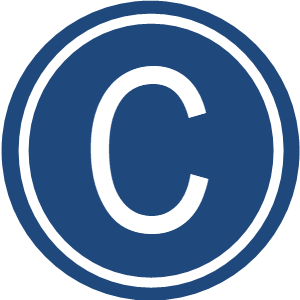 Educators do have some flexibility to use copyright-protected resources in the teaching and learning process. Still, it is not an open door to use whatever you want, whenever you want. How much can you use? How can you use it without running into trouble with copyright? Is copyright an issue in schools? Aren’t you allowed to use everything if it is for educational purposes? No, there are actually quite a number of things you cannot do and use, particularly when you start creating media for broader distribution (i.e., putting something you made on YouTube). Luckily things have changed recently to make copyright less cumbersome for education. Common Sense Media (2020)’s video provides a good overview of Creativity, Copyright, and Fair Use in education.
Educators do have some flexibility to use copyright-protected resources in the teaching and learning process. Still, it is not an open door to use whatever you want, whenever you want. How much can you use? How can you use it without running into trouble with copyright? Is copyright an issue in schools? Aren’t you allowed to use everything if it is for educational purposes? No, there are actually quite a number of things you cannot do and use, particularly when you start creating media for broader distribution (i.e., putting something you made on YouTube). Luckily things have changed recently to make copyright less cumbersome for education. Common Sense Media (2020)’s video provides a good overview of Creativity, Copyright, and Fair Use in education.
For Canadian Educators, the Council of Ministers of Education for Canada has published a comprehensive guide to education and fair use called Copyright Matters! (2022). The CMEC also hosts a comprehensive guide to Teachers’ Use of Internet Materials in the Classroom (n.d., b) and a useful Fair Dealing Decision Tool (n.d., a).
Open Access and Open Educational Resources
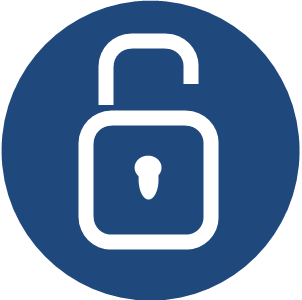 One of the biggest challenges you are likely to face when preparing to teach online is the availability of resources that are digitally accessible by your students and compatible with your primary learning platform. Open Access (OA) or Open Educational Resources (OER) are excellent alternatives because they can be accessed quickly and for minimal expense. They can also often be remixed, allowing you to customize the resources you provide to your students.
One of the biggest challenges you are likely to face when preparing to teach online is the availability of resources that are digitally accessible by your students and compatible with your primary learning platform. Open Access (OA) or Open Educational Resources (OER) are excellent alternatives because they can be accessed quickly and for minimal expense. They can also often be remixed, allowing you to customize the resources you provide to your students.
Open Access and Open Educational Resources provide a good alternative to copyright-protected teaching and learning resources. As OA and OER become more popular, the available resources continue to grow. Roy Kaufmann (Copyright Clearance Center, 2016) explains the Open Access movement and what it means for education and research.
Additional Resources
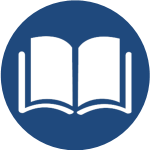
- The Open Washington website(Washington State Board for Community and Technical Colleges, 2022) provides an excellent, in-depth introduction to OER.
- The International Review of Research in Open and Distributed Learning (IRRODL) recently released a Special Issue called Outcomes of Openness: Empirical Evidence on the Implementation of OER (McGreal et al., 2017).
Creative Commons Licenses
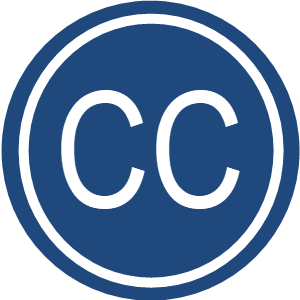 One way that OA and OER are shared is by using Creative Commons (n.d.) licenses. Process Arts (2011) briefly explains what Creative Commons licenses are.
One way that OA and OER are shared is by using Creative Commons (n.d.) licenses. Process Arts (2011) briefly explains what Creative Commons licenses are.
Lucas (2016) provides another overview of what Creative Commons means for educators.
Tools like YouTube (n.d.) readily allow anyone to use a Creative Commons attribution when sharing an online video, and clearly display that videos have been shared as such. The Creative Commons website also provides useful search tools, to help you locate useful open access resources. As Perez (2017) explains, Creative Commons has now made powerful image and photo search tools freely available through their website.
Keeping Track of the Use of Copyright Resources
 Refer to the chapter Tracking Copyright and Privacy Considerations in the Design section of this eBook for an overview of the Educational Technology Integration Copyright and Privacy Considerations (ETICPC) template, which I developed to help track key information and considerations as part of an instructional design project.
Refer to the chapter Tracking Copyright and Privacy Considerations in the Design section of this eBook for an overview of the Educational Technology Integration Copyright and Privacy Considerations (ETICPC) template, which I developed to help track key information and considerations as part of an instructional design project.
Activity
Do you plan to use OA or Creative Commons resources when developing your ID project? Start searching to find suitable resources, and add them to your blueprint/storyboard. If you plan to use copyrighted materials, do you have the proper access and clearances to use them? Will your participants? Course Participants
If you are a participant in one of my instructional design courses, please refer to the following for detailed instructions and appropriate templates (if applicable) for official course assignments: |
References
Common Sense Media (2020, September 4). Creativity, Copyright, and Fair Use. https://youtu.be/xvZHNwBHirQ
Copyright Clearance Center (2016, June 29). Copyright Answers: What is Open Access? https://youtu.be/VDXi18RPhjU
Council of Ministers of Education for Canada (2022). Copyright Matters! Some Key Questions and Answers for Teachers. https://www.copyrightmatters.ca/
Council of Ministers of Education for Canada (n.d., a). Fair Dealing Decision Tool. https://www.fairdealingdecisiontool.ca/DecisionTool/
Council of Ministers of Education for Canada (n.d., b). Teachers’ Use of Internet Materials in the Classroom. https://www.fairdealingdecisiontool.ca/Resources/UseOfInternetMaterials/
Creative Commons (n.d.). Help us build a vibrant, collaborative global commons. https://creativecommons.org/
Lucas, A. (2016, April 21). Creative Commons: An Introduction for Teachers. https://youtu.be/622OHuEMM38
McGreal, R., Blomgren, C., & Kennepohl, D. (Eds.). (2017). Outcomes of Openness: Empirical Reports on the Implementation of OER. [Special Issue]. International Review of Research in Open and Distributed Learning, 18(4). https://www.irrodl.org/index.php/irrodl/issue/view/85
Perez, S. (2017, February 7). Creative Commons unveils a new photo search engine with filters, lists & social sharing. TechCrunch. https://techcrunch.com/2017/02/07/creative-commons-unveils-a-new-photo-search-engine-with-filters-lists-social-sharing/
Power, R. (2021, February 26). Finding the Right Digital Tool is Not Enough: Addressing Copyright and Privacy Considerations. Power Learning Solutions. https://www.powerlearningsolutions.com/blog/finding-the-right-digital-tool-is-not-enough-addressing-copyright-and-privacy-considerations
Washington State Board for Community and Technical Colleges (2022). Open Washington: Open Educational Resource Network. http://www.openwa.org/
YouTube (n.d.). https://www.youtube.com/
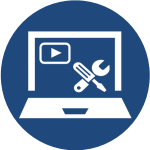 After completing a Needs Analysis, Learner Analysis, Task Analysis, and writing your Learning Goals and Objectives, you should have a pretty good idea of the types of teaching and learning resources that you will need as you design and develop your lesson plan, unit plan, or online learning module. You should now know what OA and OER are and how to use Creative Commons to find OA resources.
After completing a Needs Analysis, Learner Analysis, Task Analysis, and writing your Learning Goals and Objectives, you should have a pretty good idea of the types of teaching and learning resources that you will need as you design and develop your lesson plan, unit plan, or online learning module. You should now know what OA and OER are and how to use Creative Commons to find OA resources.